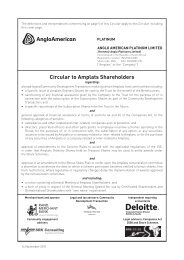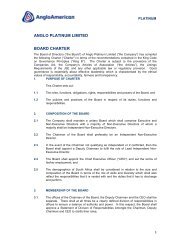ANNUAL REPORT 2001 - Anglo Platinum
ANNUAL REPORT 2001 - Anglo Platinum
ANNUAL REPORT 2001 - Anglo Platinum
- No tags were found...
Create successful ePaper yourself
Turn your PDF publications into a flip-book with our unique Google optimized e-Paper software.
<strong>Platinum</strong> Market Review (continued)AUTOCATALYSTEXHAUST EMISSIONShigh-pressure fuel pump that pressurises fuel inOn account of diesel engines’ greaterefficiency and associated fuel economy, theyproduce around 30% fewer carbon emissionsthan gasoline engines. Diesel vehicles alsoemit NOx, sulphur dioxide and particulatematter. The emission of particulate matter,or soot, characterised diesel engines of thepast and contributed to their negative imagewith consumers.a “rail” to which each injector is connected.The fuel is delivered at a constant high pressureirrespective of engine speed and againenhances the engine’s efficiency. The extremelyhigh pressure of fuel injection also results insmaller particles of fuel, which burn morereadily with the induction air and therebyimprove fuel efficiency and power output.The improved fuel efficiency also results ina reduction of exhaust emissions.operates at astoichiometric level where air/fuelratios are controlled. With thiscontrol, HC, CO and NOx, are emitted in aThere is growing supportin North America for themanufacture and sale ofmore diesel-powered lightvehicles.DEVELOPMENTS IN DIESEL ENGINETECHNOLOGYSince the late 1990s significant technicalinnovations have improved diesel enginetechnology. The first significant developmentwas direct injection of fuel into each cylinder.Direct injection increased the thermalefficiency which enhances its competitiveposition with respect to the typical internalcombustion engine. Calibration andEMISSIONS LEGISLATIONEmissions legislation covering diesel lightmotor vehicles is already in place in the majorregions. However the impact is felt mostly inWestern Europe where 36% of passengervehicles sold are diesel-powered. Legislationfor heavy-duty diesel vehicles will be phasedin from 2004 in North America, from 2005in Europe and from 2004 in Japan.ratio that, with the help of a catalyst, is easilytransformed into water, nitrogen and CO 2 .In a diesel engine, however, the surplus of airin the mix results in insufficient HC and COto react with the NOx and research anddevelopment has recently focused on thisissue. Diesel engines also produce particulatematter and increasingly more stringentemission controls reflect this. At present,technologies such as selective catalyticreduction systems, cooled exhaust gastechnological developments also improvednoise, vibration, harshness and emissions.EMISSION CONTROLrecirculation and NOx traps are used inconjunction with oxidation catalysts toMore recently, common-rail fuelling systemsThe use of the three-way catalyst in gasolinereduce emissions. A reduction in the sulphurhave been developed, which use a singleengines works very efficiently if the enginelevels of fuels has resulted in a marked26


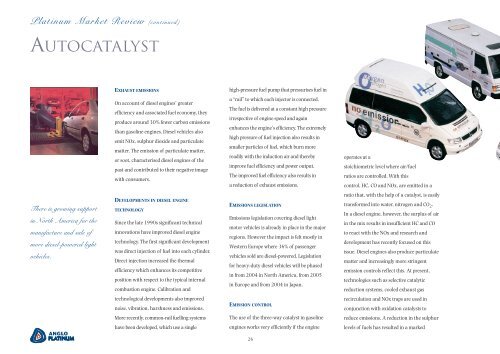
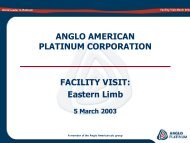
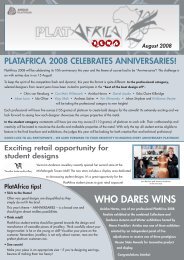
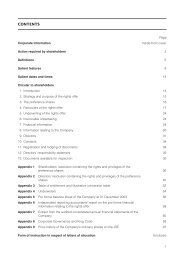

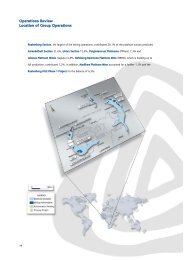
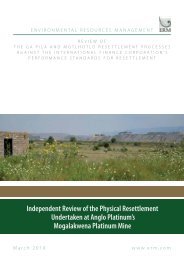


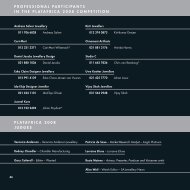

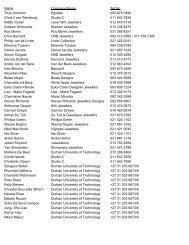
![[PDF] Mogalakwena Mine - Anglo Platinum](https://img.yumpu.com/43065142/1/184x260/pdf-mogalakwena-mine-anglo-platinum.jpg?quality=85)
